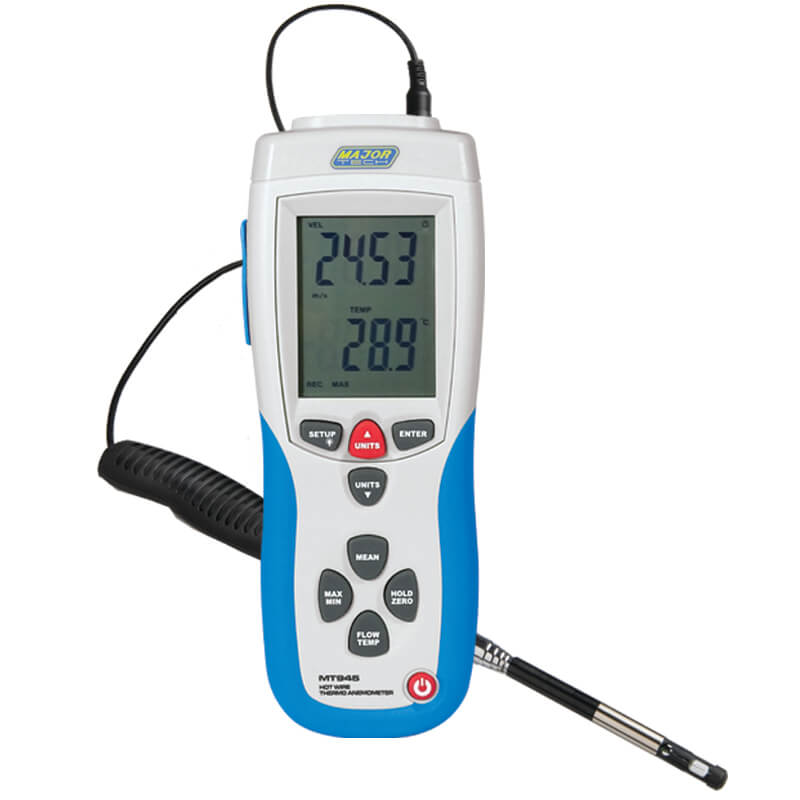All You Need to Know Regarding Anemometers: How They Function, Why They Matter, and Where to Use Them
Anemometers, though usually ignored in the realm of clinical tools, play a vital role in different areas, using beneficial insights right into wind rate and air flow patterns. Recognizing the mechanics behind these gadgets is essential for any individual looking for to harness the power of this data. From meteorologists tracking weather condition patterns to designers designing structures with wind lots in mind, the applications of anemometers are far-ranging and varied. As we explore the complexities of anemometer technology, we will uncover the internal workings of these gadgets, their value, and the key considerations when selecting the appropriate anemometer for specific applications.

Anemometer Fundamentals
An important tool utilized to gauge wind speed and instructions, the anemometer plays an essential duty in meteorology and numerous industries. An anemometer commonly consists of 3 or four cups that revolve in the wind, a vane that points right into the wind, and sensors to track the movements or turnings.
There are numerous kinds of anemometers available, including cup anemometers, vane anemometers, hot-wire anemometers, and sonic anemometers, each with its special features and applications. Cup anemometers are frequently made use of for standard wind rate dimensions, while vane anemometers are preferred for directional measurements.
Principles of Anemometer Operation
Building on the fundamental understanding of anemometer basics, the principles of anemometer operation elucidate the mechanics behind wind speed and direction dimensions. Anemometers operate the concept of air movement influencing a sensing unit, creating it to revolve. Mug anemometers, as an example, have three or more cups that capture the wind, causing them to rotate much faster as the wind rate boosts. The rotation speed is then transformed right into a wind rate measurement. Vane anemometers, on the other hand, use a tail or a probe that straightens itself with the wind instructions, supplying a dimension of wind instructions based on the orientation of the sensing unit. Hot-wire anemometers rely upon a warmed cable that cools down as wind overlooks it, with the price of cooling establishing the wind speed. Ultrasonic anemometers action wind rate and direction by analyzing the time it considers ultrasonic signals to travel between transducers. Recognizing these concepts is vital for accurate and dependable wind dimensions in various applications.
Importance of Anemometers
The relevance of get redirected here anemometers in meteorology and different industries can not be overemphasized. Anemometers play an important duty in gauging wind speed and direction, providing important data for weather condition projecting, environment studies, ecological monitoring, and air travel procedures. Meteorologists rely upon anemometers to gather exact wind data, assisting them recognize weather condition patterns, forecast storms, and issue timely warnings to the public. In sectors such as building and construction, farming, sustainable power, and maritime procedures, anemometers are made use of to maximize processes, guarantee safety and security, and boost efficiency. For instance, wind ranch operators make use of anemometers to analyze wind problems and make best use of electricity production from wind generators. In the maritime market, anemometers help ship navigation by offering real-time wind details to captains, aiding them make informed choices to make certain risk-free voyages. Generally, anemometers are important devices that contribute significantly to safety and security, efficiency, and educated decision-making in weather forecasting and a wide variety of sectors.
Applications Throughout Numerous Industries
In the sustainable energy industry, anemometers play a critical duty in evaluating wind conditions for wind farm positionings, guaranteeing ideal power production. Industries like construction and mining make use of anemometers to keep track of wind speeds, critical for security protocols, particularly when functioning at elevations or in open-pit mines where solid winds can present threats. In agriculture, anemometers help farmers in taking care of plant splashing by offering real-time data check my blog on wind speed to prevent drift.

Picking the Right Anemometer for Your Requirements
For basic objectives, a mug anemometer is appropriate for determining wind speed, while a vane anemometer provides wind instructions information. Hot-wire anemometers are suitable for reduced airspeed measurements, and ultrasonic anemometers provide high accuracy and durability.

Final Thought
In verdict, anemometers play an important function in gauging wind rate and direction throughout numerous sectors. It is vital to take into consideration the significance of anemometers in order to make informed choices when picking the most suitable tool for determining wind problems.
There are various kinds of anemometers available, consisting of cup anemometers, vane read this article anemometers, hot-wire anemometers, and sonic anemometers, each with its special features and applications. Cup anemometers are typically used for basic wind speed measurements, while vane anemometers are favored for directional dimensions. Hot-wire anemometers are suitable for low airspeeds, and sonic anemometers are optimal for high-precision measurements in research and commercial setups.Building on the fundamental understanding of anemometer fundamentals, the concepts of anemometer operation illuminate the mechanics behind wind speed and direction measurements. For general objectives, a cup anemometer is appropriate for gauging wind rate, while a vane anemometer supplies wind direction information.
Comments on “How to Preserve and Care for Your Anemometer to Guarantee Long Life”